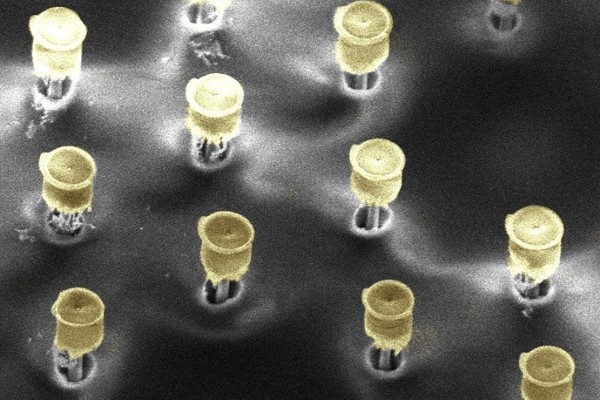
Congratulations to the winners of the STS Elionix Scientific Image competition of Q2 2022!
The STS Elionix Scientific Image competition allows us to showcase the creative side of the researchers here at Tyndall. They share scientific images from their research which they have discovered to be visually striking or informative to the technically excellent.
The judges for the Q2 competition were Prof. William Scanlon, CEO; Peter Smyth, Commercial Director; Ursula Morrish, Marketing & Communications Manager; Graeme Maxwell, Head of Specialty Products & Services; and Dr Daniela Iacopino, Researcher, MNS.
The exceptional quality and creativity in these images led to the votes being cast to three talented winners: Dr Simone Varo, Xing Ouyang & Veronica Biolcati.
The three winners are each awarded a €100 Me2You Gift Card, kindly sponsored by STS Elionix.
Congratulations again to the winners.
Micro-Marshmallow
Dr Simone Varo, Epitaxy and Physics of Nanostructures Group

This image is part of a Catalyst award called "Coupling of non-classical light sources to compact photonic integrated packages for quantum information technologies".
Photonic nanowires are one of the most promising approaches to enhance light extraction efficiency from quantum dots. This is a necessary step in their use as sources of single and entangled photons in future quantum computers.
In Tyndall National Institute, a novel self-aligning and wafer-scalable technique has been developed that allows the fabrication of millions of such nanowires. However, trying to invert them so that they point upwards is a tricky process.
In this image, part of a Silicon Nitride protective shell was not removed due to a passivating layer formed in the previous processing steps. This caused the formation of a "micro-marshmallow" on top of the photonic nanowires.
Ocean of Information
Xing Ouyang, Photonic Systems Group

Today everyone is connected by the electromagnetic waves that convey billions and trillions of information bits every second between humans and electronic objects. Electromagnetic waves that deliver phone messages, connect voice/video calls, games and stream TV shows and movies.
However, have you ever wondered what the invisible information-borne waves look like? Here is the illustration of these untouchable bit streams – The Ocean of Information.
This image depicts the received wireless signal over time and frequency dimensions. Specifically, it shows 61.44-MHz bandwidth signals over ten-second span centred at 835 MHz, somewhere in Tyndall National Institute.
The level of the seabed indicates the strength of the signal – the higher the strength, the higher the information capacity. We can see the continental shelf, slop, Abyssal plain, ridges and also submarine volcanos and trench. Maybe we, as humans, are the fish swimming in the Ocean of Information.
This work is supported in part by the IRC, EI, and also the SFI-IPIC Emerge Leadership Award.
Gaelic Pride
Veronica Biolcati, Nanotechnology Group

The image is from the medieval Gaelic manuscript, the Book of UÍ Mhaine. It is part of a study that has been conducted under the auspices of the Irish Research Council Advanced Laureate Project - Inks&Skins. This study aims to understand the materiality of Gaelic medieval manuscripts.
The pseudo-colour obtained in this image was made by processing 15 multispectral images of the folio 35 recto. The advanced image processing was conducted via Principle Component Analysis. PCA is a mathematical algorithm to detect and visually highlight differences in spectral response between the various components of an object.
In the case of a manuscript, PCA helps to visualise the dispersion of inks and pigments on the pages. It also detects the humidity and mould stains that affected manuscripts throughout the centuries, and helps to recover faded text. Notice the difference of the inks used for the text and for the initial letter C. Carbon-based ink absorbs in infrared and iron-based reflects instead, resulting in different colours in this pseudo-colour image.
Finally, as this Scientific Images competition was in June, this image is attempting to reproduce the rainbow colours to celebrate Pride month along with the LGBTQIA+ community.
